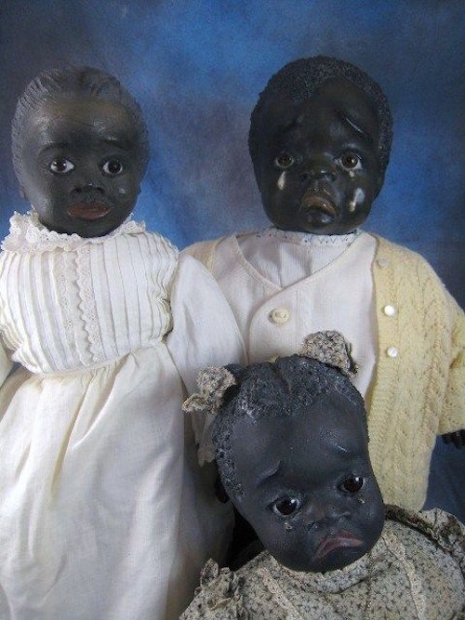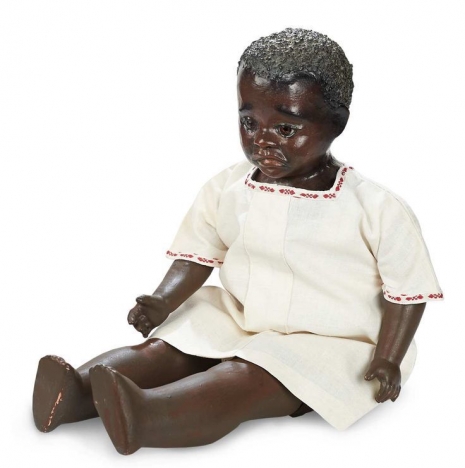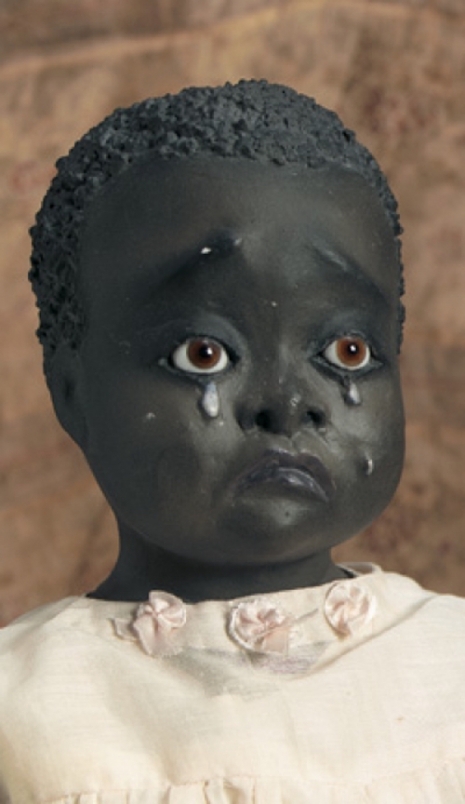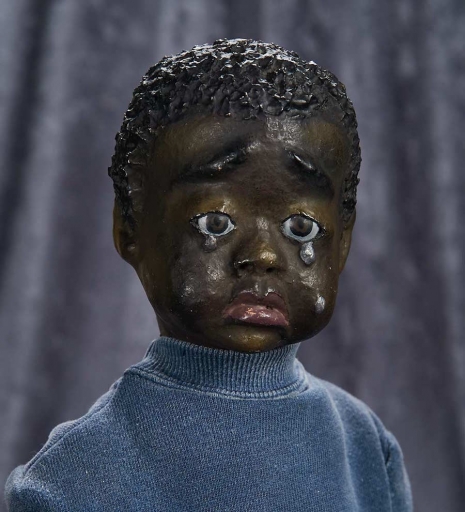
A trio of dolls made by Leo Moss, early 1900s.
An article published in The New York Times on January 9th, 1978 about avid doll collector and author Myla J. Perkins provided some background on Leo Moss, a doll maker from Macon, Georgia. As the article alleges, many doll collectors—even those who primarily collected dolls with black “skin” had never heard of Moss or his incredibly poignant dolls until the 1970s.
According to this vintage piece from the Times, Moss would make “white” dolls in the image of the white children who lived in his neighborhood, and would then trade them for whatever he needed to create his black dolls and food for his family. The vast majority of Moss’ dolls were based on members of his own family, including his children. A jack-of-all-trades, Moss started making his paper maché dolls back in the late 1800s through the early part of the 1900s. In order to make his black dolls, Moss used discarded doll parts and soot from chimneys as well as boot dye to color their skin, and his wife Lee Ann made the delicate doll clothing. Moss also bought rejected or defective doll parts from a white man who worked for a New York toy supply company. And according to the folklore associated with Leo Moss, the helpful salesman was apparently the reason as to why many of Moss’ dolls faces are filled with sadness and authentic looking tears. Because at some point Lee Ann ran off with the New York doll parts dealer, taking the couple’s youngest child Mina along with her.
While this is about the most depressing thing I’ve read in awhile, author and historian Debbie Behan Garrett noted an equally sad explanation for Moss’ unhappy dolls in her 2008 book Black Dolls: A Comprehensive Guide to Celebrating, Collecting, and Experiencing the Passion. According to Garrett if one of Moss’ young models was unhappy or crying while he was trying to capture their image, he added the tears. Moss’ dolls are extremely rare and perhaps only 100 of them still exist today. Highly sought after by collectors the dolls sell for thousands of dollars, with one selling in 2010 for $10,350.
More photos of Moss’ dolls can be seen below.

1920.

‘Cleo.’



‘Violet May Collins,’ 1922.


‘Rex,’ 1912. In 2010, Rex sold for a whopping for $10,350.00.

1901.
Previously on Dangerous Minds:
Doll parts: A terrifying glimpse inside doll-making factories from around the world
Creepy ventriloquist dummies that look like they might want to kill you
Frozen Charlotte: The creepy Victorian-era dolls that slept in coffins and were baked into cakes